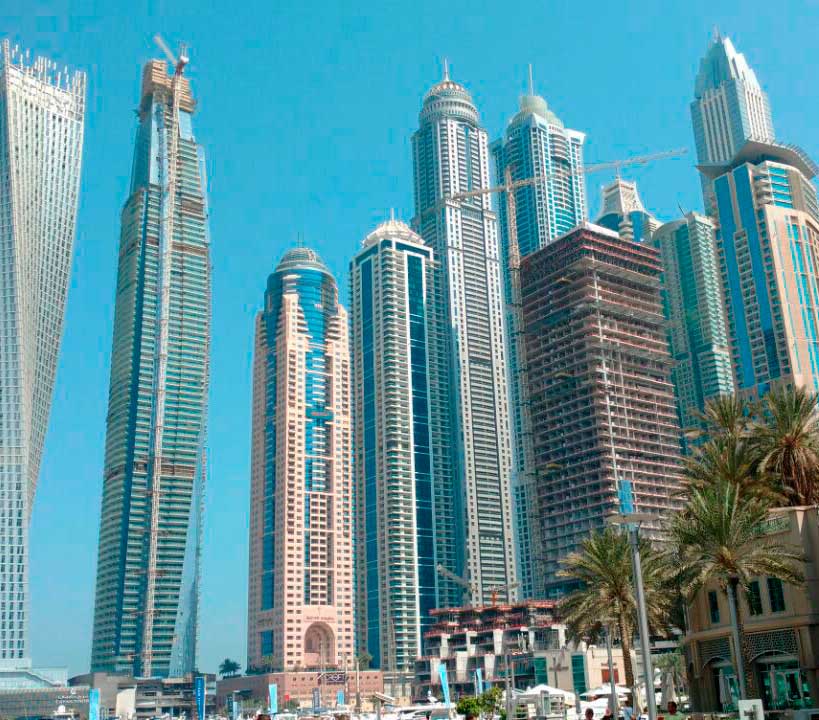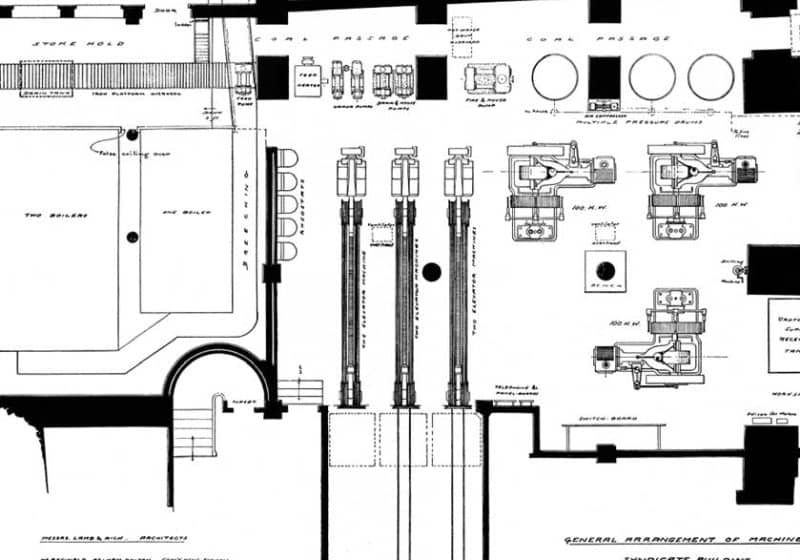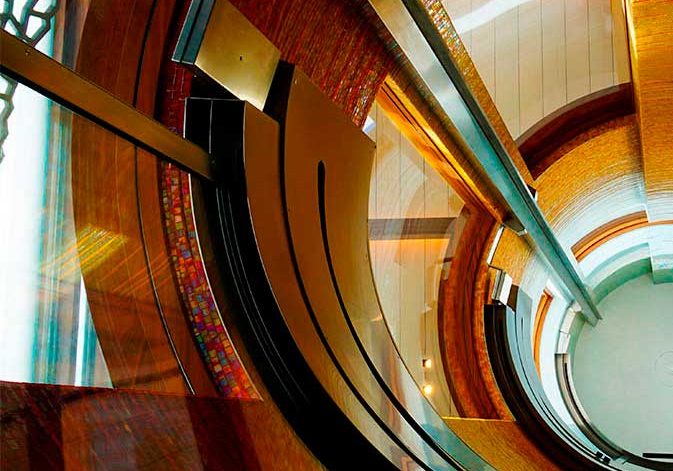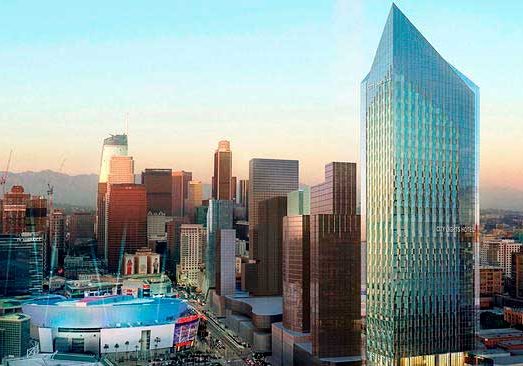Toshiba Overcomes Challenges at Dubai Luxury Tower
May 1, 2017

Tight schedules and logistics required creative solutions for DAMAC Heights elevator team.
submitted by Toshiba Elevator Middle East
Dubai is no stranger to larger-than-life construction projects. From the Palm Jumeirah Island to the Burj Khalifa, the emirate’s portfolio continues to grow. One of the latest examples is the dramatic DAMAC Heights development, a 91-story waterfront luxury apartment building bursting with amenities and offering residents panoramic views of Palm Jumeirah Island and the Persian Gulf. Its location at the Dubai Marina puts DAMAC Heights near shopping, nightlife and the renowned Marina Walk. Not only is this one of the emirate’s most popular residential districts, it’s also very popular with tourists, who find themselves surrounded by a large selection of five-star resorts, boutique hotels, restaurants and coffee shops, malls and more, all with easy access to the main highways of Dubai. The 352-m-tall tower includes five basement levels and five podium floors, and is already the recipient of three property awards.
DAMAC Properties LLC served as project developer. AECOM served as project consultant, and Arabtec Construction LLC was the contractor. Italian fashion house Fendi designed the tower’s luxury apartments. Toshiba Elevator Middle East (TELME) was chosen as elevator contractor on the tower.
Elevator Specifications
To handle the large volume of passenger traffic, DAMAC Heights’ 12 elevators are separated into low, mid and high zones:
- The low zone caters to the first 53 floors with six elevators, each with a capacity of 1000 kg and speed of 3 mps.
- The mid zone caters to traffic from the 57th to 65th floors with three elevators, each with a capacity of 1000 kg and speed of 4 mps.
- The high zone offers two passenger elevators and one service elevator, operating in a three-car group, that cater to the traffic from the 66th to 85th floor at a speed of 5 mps. The passenger elevators have a capacity of 1000 kg each.
The service elevator in normal operation will serve as a passenger elevator but will have the capability to operate as an independent service elevator when needed. The capacity of the service elevator is 1600 kg, and it will access all 91 stories.
These high-speed elevators are from Toshiba’s “New ELBRIGHT” series and employ advanced technologies and group control systems. They offer quiet operation, energy savings and reduced machine-room space requirements. The equipment is supplied from Toshiba Elevator and Building System Corp. (TELC) manufacturing facilities in Japan, China and Malaysia, and were designed by vertical-transportation consultants Cooper Wilcock Kramer. They come with advanced features that include seismic and building sway sensors.
The Project Team
Considering the high-profile nature of the project and the challenges it presented, M.J. Mohamad Iqbal, managing director, TELME, in conjunction with TELC Japan, chose Fazel Ebrahim, assistant general manager for installation, as project team leader, based on his expertise and project and contract management skills.
Ebrahim’s team included Dhulkaz Hussain as project manager and Mohamed Naufal as installation engineer. At the project’s peak, there were 50 elevator technicians working at the site.
The Installation Process and the Challenges
The project used Toshiba CL 600 series high-speed elevators for the low and mid zones, and CL 620 series for the high zone. In addition to the challenge of maintaining a critical schedule, the team faced the logistical challenges of transporting and handling a large amount of elevator parts and materials at a site located in an active residential and business district. The logistical limitations meant that a large volume of materials had to be stored in the basement.
The movement of the materials required intricate planning and organization but was accomplished without incident.
The construction plan included the scheduled handover of the installed elevators for construction-time usage. Upon the handover of the machine room, the Toshiba team had 90 days to install the elevators so they could be used by construction personnel after the removal of the outside lifts. Because of the careful planning and coordination with the main contractor, consultants and building developer, the elevator project was completed on time. These coordinated efforts also made it possible to overcome the logistical hurdles, staging deliveries in coordination with the factories supplying the parts and materials.
Another significant challenge was to raise the high-zone traction machines, weighing 4.5 mT each, to the high-zone machine room on the 86th floor. The traction machines were hoisted by tower crane from ground level to the machine room, with maximum importance being placed on safety. In line with Toshiba’s health and safety policy — and with particular emphasis on issues regarding working at heights — regular safety discussions were conducted every day, and there were frequent meetings designed to create awareness and maintain the highest level of safe practices. These efforts were successful, as the job was completed without a major accident.
TELC’s Involvement
TELC Japan took an active role in the testing and adjustment of the DAMAC Heights elevators, bringing in specialists to ensure quality and support. Many people from the sales, quality and field departments made frequent visits, monitoring the progress, quality and inspections of each stage of installation and testing.
The success of the project was dependent on the teamwork displayed by the project team, TELME management and the leadership at TELC. The project was completed well ahead of its deadline.
Get more of Elevator World. Sign up for our free e-newsletter.









